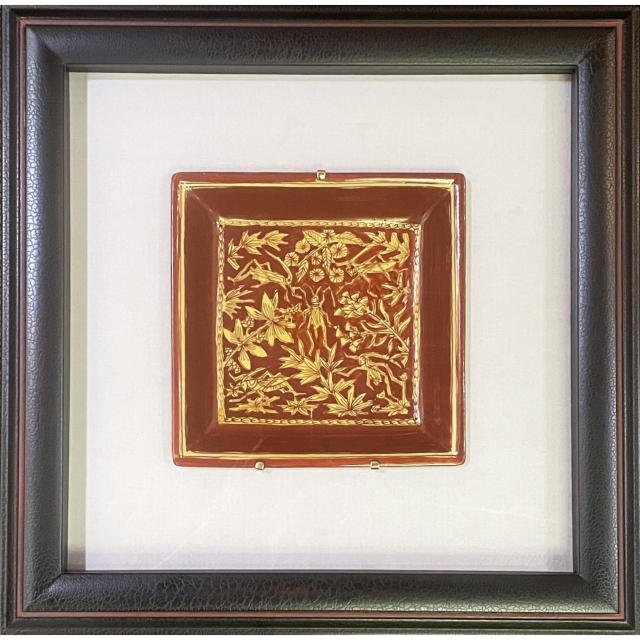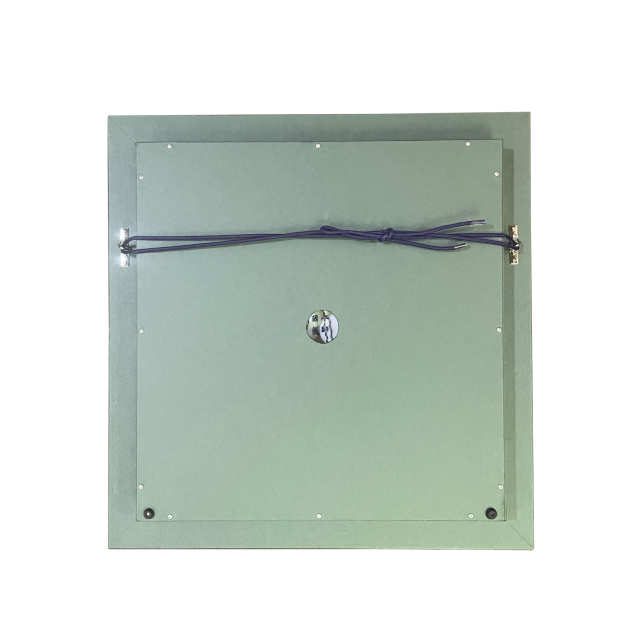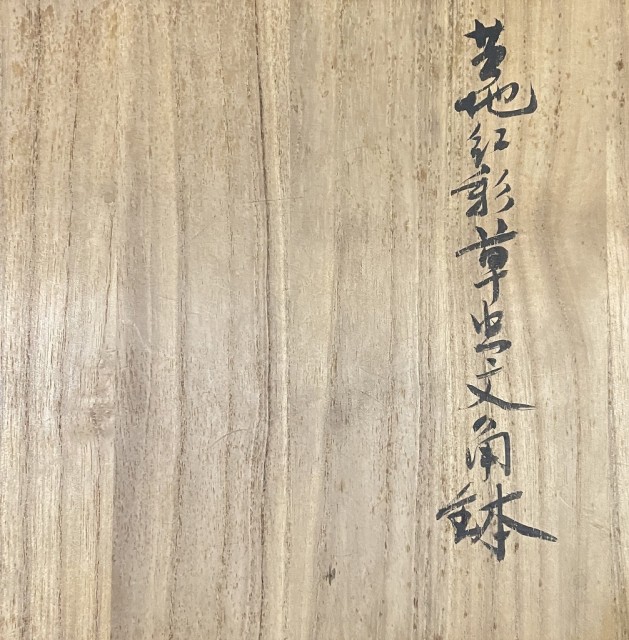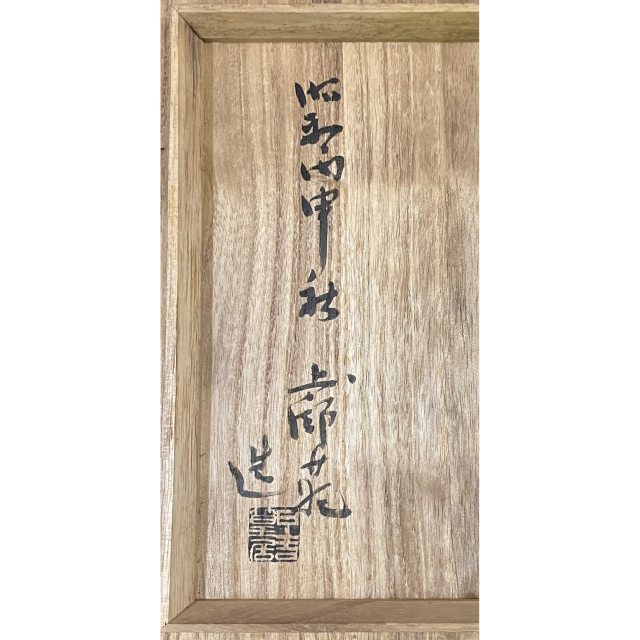






Original Box
Showa Period
Size of frame: 40.5cm×40.5cm
Living National Treasure
We are honored to present "Yellow Ground Red Glaze Plate in Frame" by Hajime Kato, a pivotal master who led the modern Japanese ceramic art scene. Designated as a Living National Treasure in 1961 (Showa 36), Kato Hajime explored a wide array of styles, notably elevating the "Kōchi Kōsai" (Yellow Ground Red Glaze) technique, drawing inspiration from ancient Chinese ceramics, through his unique interpretation.
This particular work features a rich reddish-brown ground, upon which intricate gold details intricately weave a vibrant botanical motif. At its center, a charming, almost ethereal figure is delicately rendered. The masterful application of the Kōchi Kōsai technique, combined with the brilliance of the gold, creates a serene yet profound beauty. Framed, this piece's artistic appeal as an objet d'art is further enhanced.
In addition to the tatou (protective outer wrapper) for the frame, the original kyobako (artist's signed wooden box) for the plate is also included. It bears the inscription "Showa Hinoe-saru Aki" (Autumn of Showa 31 / 1956), a valuable record indicating the period of the plate's creation and serving as proof of its authenticity. This piece is a true masterpiece, embodying a harmonious fusion of traditional East Asian aesthetics pursued by Kato Hajime and a contemporary sensibility.
Hajime KATO 加藤土師萌
1900 - 1968
First studied design etc., under pottery art designer Hino Atsushi, afterwards working at Gifu Prefectural Ceramics Research Institute and starting to create pottery on the side in 1926. In 1927, he was selected for a prize for the first time in the eighth Exhibition of the Imperial Fine Arts Academy in the fourth category, the Industrial Art Category, which was newly established in the same year. Since then, he continued to exhibit his works, and took on the name “Hajime” from 1930.
Additionally, he received the Grand Prize at the Paris International Exposition in 1937, and in 1940, he built a kiln in Yokohama and focused on researching the glaze of China’s Ming Dynasty, creating a fusion of it with Seto glaze and receiving the Chunichi Cultural Award in 1952. In 1954, he established the ‘Touri Society’ in Touri, Izusan with Ishiguro Munemaro, Kaneshige Toyo, Arakawa Toyozo and Kato Tokuro. Furthermore, he left contributions in the research of porcelain as well, such as red-figure, white porcelain and celadon porcelain. In 1957, he was acknowledged as a preserver of the overglaze technique, and was then acknowledged as a Preserver of Important Intangible Cultural Property (Living National Treasure) in 1961.
Contact about the Item